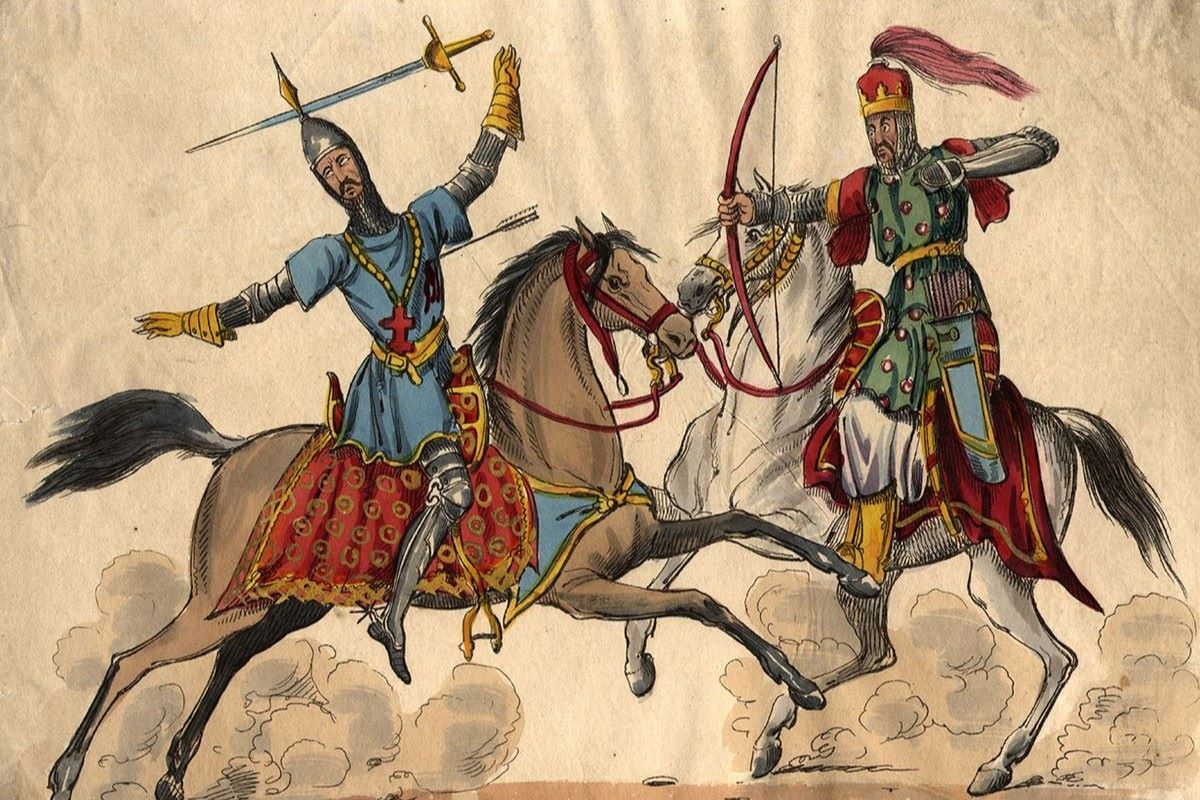
Curious about the Median-Lydian War? This ancient conflict between the Medes and the Lydians took place in the 6th century BCE. It’s a fascinating slice of history filled with battles, alliances, and even a solar eclipse that ended the war. Why did these two powerful kingdoms clash? The reasons are rooted in territorial ambitions and the desire for dominance in the region. What was the outcome? The war concluded with a peace treaty, brokered by the Babylonian king, which led to a marriage alliance. This war not only shaped the political landscape of the time but also left a lasting impact on future generations. Ready to dive into 30 intriguing facts about this historical event? Let’s get started!
Key Takeaways:
- The Median-Lydian War, fought between Media and Lydia, showcased the importance of diplomacy and natural phenomena in shaping historical events, leading to a lasting peace treaty and cultural impact.
- The war's legacy includes its role as one of the earliest recorded conflicts, the strategic significance of the Halys River, and the influential solar eclipse, highlighting the complexities of ancient conflicts.
The Median-Lydian War: An Overview
The Median-Lydian War was a significant conflict in ancient history. It involved two powerful kingdoms, Media and Lydia, clashing over territorial disputes and power. This war had lasting impacts on the region and its people.
-
The Median-Lydian War took place between 590 and 585 BCE.
-
The war was fought between the Median Empire, located in present-day Iran, and the Lydian Kingdom, in modern-day Turkey.
-
The conflict began due to territorial disputes and the desire for regional dominance.
-
Cyaxares was the king of Media during the war.
-
Alyattes was the king of Lydia during the conflict.
-
The war lasted for five years, with neither side gaining a decisive advantage.
Key Battles and Strategies
The war saw several key battles and strategic maneuvers. Both sides employed various tactics to outmaneuver their opponents.
-
One of the most significant battles occurred near the Halys River, which served as a natural boundary between the two kingdoms.
-
Both armies used a mix of infantry and cavalry units in their strategies.
-
The Medes were known for their skilled archers and horsemen.
-
The Lydians were famous for their heavy cavalry and chariots.
-
Siege warfare was a common tactic during the war, with both sides attempting to capture fortified cities.
The Role of Natural Phenomena
Natural phenomena played a crucial role in the outcome of the Median-Lydian War. These events influenced the decisions and actions of both sides.
-
A solar eclipse occurred on May 28, 585 BCE, during a battle between the Medes and Lydians.
-
The eclipse was interpreted as an omen by both sides, leading to a temporary ceasefire.
-
The Greek philosopher Thales of Miletus predicted the eclipse, which added to its significance.
-
The ceasefire eventually led to peace negotiations between the two kingdoms.
The Peace Treaty and Its Aftermath
The war ended with a peace treaty that had lasting effects on the region. This agreement shaped the future interactions between Media and Lydia.
-
The peace treaty was mediated by Syennesis of Cilicia and Labynetus of Babylon.
-
The Halys River was established as the boundary between Media and Lydia.
-
The treaty included a marriage alliance between the two royal families to solidify peace.
-
Aryenis, the daughter of Alyattes, married Astyages, the son of Cyaxares.
-
This marriage alliance helped to strengthen diplomatic ties between the two kingdoms.
Cultural and Historical Impact
The Median-Lydian War left a lasting impact on the cultures and histories of both kingdoms. It influenced their development and interactions with other civilizations.
-
The war demonstrated the importance of diplomacy and alliances in ancient conflicts.
-
It highlighted the role of natural phenomena in shaping historical events.
-
The peace treaty set a precedent for future diplomatic negotiations in the region.
-
The marriage alliance between Media and Lydia influenced the political landscape of the time.
-
The war and its resolution were recorded by several ancient historians, including Herodotus.
Legacy of the Median-Lydian War
The legacy of the Median-Lydian War can still be seen in modern times. Its impact on history and culture continues to be studied and remembered.
-
The war is considered one of the earliest recorded conflicts in history.
-
It showcased the strategic importance of the Halys River as a natural boundary.
-
The solar eclipse during the war remains a significant event in the history of astronomy.
-
The peace treaty and marriage alliance influenced the future relations between Media and Lydia.
-
The Median-Lydian War serves as a reminder of the complexities and consequences of ancient conflicts.
Final Thoughts on the Median-Lydian War
The Median-Lydian War stands out as a pivotal moment in ancient history. This conflict, which lasted from 590 to 585 BCE, ended with the famous Battle of the Eclipse. The battle's unexpected conclusion due to a solar eclipse led to a peace treaty, showcasing how natural events can influence human affairs. The war also highlighted the strategic importance of alliances, with both sides seeking support from neighboring powers.
Understanding this war provides insight into the complexities of ancient diplomacy and warfare. It reminds us that history is shaped by a mix of human ambition, strategic decisions, and sometimes, sheer chance. The Median-Lydian War's legacy continues to fascinate historians and enthusiasts alike, offering valuable lessons about the unpredictable nature of conflict and the enduring quest for power and peace.
Frequently Asked Questions
Was this page helpful?
Our commitment to delivering trustworthy and engaging content is at the heart of what we do. Each fact on our site is contributed by real users like you, bringing a wealth of diverse insights and information. To ensure the highest standards of accuracy and reliability, our dedicated editors meticulously review each submission. This process guarantees that the facts we share are not only fascinating but also credible. Trust in our commitment to quality and authenticity as you explore and learn with us.


